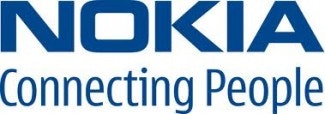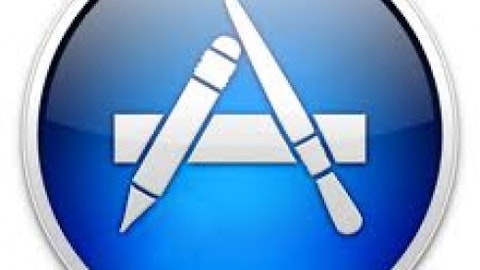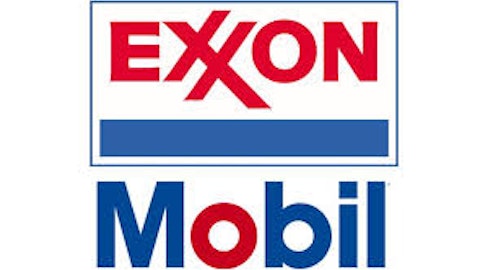In recent times, Nokia Corporation (ADR) (NYSE:NOK) has struggled to compete with the Android-iPhone duopoly, especially when it comes to high-end smartphones. With the launch of the much-hyped 41 megapixel PureView phone, the Lumia 1020, Nokia hopes to give competitors something to think about. However, as an investor, I don’t think that this phone would be able to live up to its hype as an integral step in the company’s turnaround.
A game-changer?
If I were asked to describe CEO Stephen Elop’s strategy for Lumia smartphones, I would say “differentiation.” Nokia Corporation (ADR) (NYSE:NOK) rejected the lure of Google Inc (NASDAQ:GOOG)’s Android and chose to work exclusively with Microsoft Corporation (NASDAQ:MSFT) to make Windows Phones in order to differentiate its products in a highly competitive smartphone market. Similarly, on the hardware side, Nokia’s latest flagship device aims to differentiate itself from its competitors by offering what most reviewers describe as the “best camera on a smartphone.” Elop is so excited by the Lumia 1020 that on the second-quarter earnings call, he described the phone as “game-changing.”

So the question is, how many people would be willing to pay extra money to buy this Windows Phone, instead of purchasing a more mainstream rival? Not too many, I would suspect. I believe that the Lumia 1020 is a niche product that won’t have much of an impact on Nokia Corporation (ADR) (NYSE:NOK)’s bottom line.
Is Nokia doomed?
Although I’m not very bullish on the prospects of the Lumia 1020, I believe that Nokia Corporation (ADR) (NYSE:NOK) as a company is headed in the right direction. In its second-quarter earnings results, Nokia reported an EPS of -$0.08 on revenue of $7.4 billion versus consensus of a $0.03 loss per share and $8.63 billion revenue. Nokia shipped a record 7.4 million Lumia devices during the quarter, up 32% from the previous quarter, but missed analysts’ lofty expectations of over 8 million. The Average Selling Price (ASP) of the Lumia phones declined 18%, sequentially, as a result of the mix shift toward lower-priced Lumia devices. I believe that the decline in the ASP was due an outdated lineup of top-end devices during the quarter. Therefore, I expect the trend to reverse in the third quarter as the introduction of Lumia 925, Lumia 928, and Lumia 1020 should help push the ASP higher.
While 7.4 million Lumia shipments seems dwarfed compared to smartphone giants Apple Inc. (NASDAQ:AAPL) and Samsung, I think that it is more realistic and relevant to compare Nokia Corporation (ADR) (NYSE:NOK) to BlackBerry Ltd (NASDAQ:BBRY), another former phone giant hoping for a turnaround. In its fiscal first-quarter earnings results, BlackBerry reported a loss of $0.13 per share on revenue of $3.1 billion, missing consensus estimates of an EPS of $0.07 and revenue of $3.36 billion. BlackBerry shipped 6.8 million smartphones during the quarter, of which just 2.7 million were devices based on the new BlackBerry 10 platform. Another way to look at this is that BlackBerry sold 0.6 million fewer phones than Nokia’s Lumia shipments alone. Granted, BlackBerry is still in the very early stages of its turnaround, but the purpose of this comparison is to show that Nokia has worked very hard over the past year to get to this level, and I believe that Nokia has built a good platform to continue to grow its Lumia phone sales.
Microsoft needs Nokia to succeed
When comparing Nokia Corporation (ADR) (NYSE:NOK) with BlackBerry, one must not forget that the Finnish phone-maker has the backing of software giant, Microsoft Corporation (NASDAQ:MSFT), on its side. Initially, many were skeptical about Microsoft’s commitment toward mobile products. However, Microsoft’s latest earnings results show that the Redmond-based software giant is feeling the heat from the slump in the PC market and needs to get into mobile computing if it is to remain an important player in the computing world. In its fiscal fourth-quarter results, Microsoft reported an EPS of $0.66 on revenue of $19.9 billion, missing analysts’ expectations of $0.75 EPS and $20.7 billion revenue. The revenue for the Windows division was down 6% year-over-year.
The chart below, from analyst Benedict Evans, shows how Microsoft Corporation (NASDAQ:MSFT) has rapidly lost its monopoly in the computing world. As tablets and smartphones overwhelm PC sales, Microsoft’s share of connected devices sales has dropped from more than 90% in 2009 to less than 25% today.

The latest statistics from AdDuplex indicate that Nokia Corporation (ADR) (NYSE:NOK) accounts for more than 83% of Windows Phones manufactured worldwide. Therefore, it is extremely important for Microsoft Corporation (NASDAQ:MSFT) that Nokia succeeds.
Like Nokia Corporation (ADR) (NYSE:NOK), Microsoft Corporation (NASDAQ:MSFT) is also on a learning curve and is striving hard to bring improvements to its OS. Windows Phone 8 is leaps and bounds better than Windows Phone 7, which has contributed positively to the growth in Lumia sales. Microsoft recently announced that it would extend the support lifecycle for Windows Phone 8 from 18 months to 36 months, which is another indication of the company’s commitment to the platform. As an investor, I hope that Microsoft brings out its Windows Phone 8 GDR3 update as soon as possible, which will reportedly support 1080p HD resolution and quad-core processors, thus giving Nokia devices more ability to compete with the likes of HTC, Apple, and Samsung.
In my view, the Microsoft Corporation (NASDAQ:MSFT) factor gives Nokia Corporation (ADR) (NYSE:NOK) a significant advantage over BlackBerry because it gives Nokia the opportunity to focus on hardware while allowing its partner to worry about software. Therefore, I believe that BlackBerry will find it even more difficult to ramp up its BB10 sales.
Foolish take
As an investor, it is easy to get carried away when a company shows off a new product, hoping that it will somehow annihilate competitors with jaw-dropping features. I believe that something similar is happening with Nokia Corporation (ADR) (NYSE:NOK) and the Lumia 1020. In my opinion, the Lumia 1020’s impact on Nokia’s turnaround prospects will be rather modest. With Lumia sales growing, feature-phone sales stabilizing, and Nokia Siemens Network delivering excellent operating margins, the overall picture looks good for Nokia. This can only be good news for Microsoft Corporation (NASDAQ:MSFT), as strong Lumia sales would help the software giant regain its foothold in the computing world. For BlackBerry, however, I believe that it is going to be an uphill struggle to regain even a fraction of its lost dominance. I recommend both Nokia and Microsoft as a “buy,” but BlackBerry as a “hold.”
Zain Zafar has no position in any stocks mentioned. The Motley Fool owns shares of Microsoft.
The article Could This Be a Game-Changer? originally appeared on Fool.com.
Copyright © 1995 – 2013 The Motley Fool, LLC. All rights reserved. The Motley Fool has a disclosure policy.





